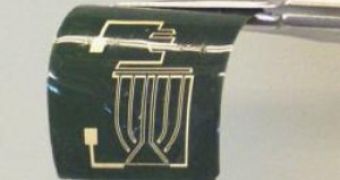The electronics industry is involved in a continuous race to make today's TV screens and cell phones more efficient, cheaper and of a higher quality. LCDs are one of the most popular types of commercially available displays, but a newcomer is about to challenge their position.
Weijia Wen and colleagues at the Hong Kong University of Science and Technology, recently developed a new type of display, which is flexible, lightweight and much cheaper that currently produced LCD applications.
The new device relies on thermochromism, meaning that it's an electronic device that can display various colors depending on temperature changes it undergoes. This is not the first time this principle is used to create simple images on a surface, but most existent devices are based on LCD technology, combined with polymers, which become more and more expensive with size increase.
"Compared with traditional displays, our device has a very simple structure and low cost, especially for making large displays," declared Wen, quoted by New Scientist. "This means it could be potentially easier to commercialize."
At only 150 microns in thickness, the new device is made of a thermochromic composite, made of wires arranged in a specific pattern. These wires are produced from metallic nanoparticles which have been dispersed in a polymer called polydimethylsiloxane (PDMS).
These patterns can rapidly change color, ranging from white to dark green, at temperatures exceeding 60?C. To reach this temperature, an electric field is applied to two electrodes, which heat up. The process produces the best clarity for thermochromic materials ever achieved.
Flexible displays are being researched by many companies and could find various applications in flexible electronics, due to their considerable advantages, like package size reduction, a simplified system design, considerable weight and thickness reduction and the fact that they can dissipate heat at a better rate than any other dielectric material while providing the added benefits of vastly improved flexibility.

 14 DAY TRIAL //
14 DAY TRIAL //